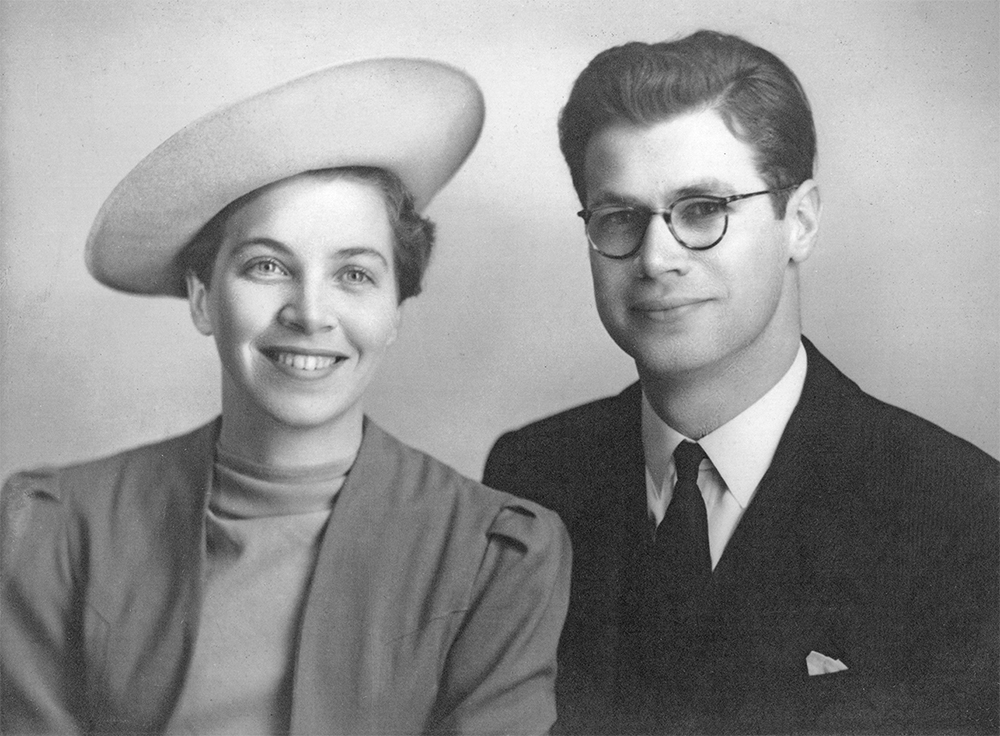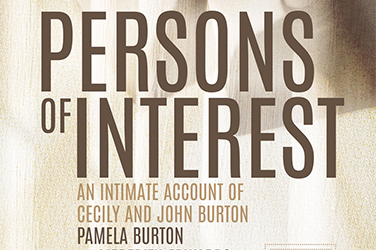
- Free Article: No
- Contents Category: Biography
- Review Article: Yes
- Article Title: Public and private lives
- Article Subtitle: A controversial diplomat and bureaucrat
- Online Only: No
- Custom Highlight Text:
Persons of Interest does not fit readily into any familiar genre. It crosses the borders of biography, psychology, Cold War history, and family studies. When Pamela Burton and her sister Meredith Edwards decided to write a book about their parents, they realised that different readerships would be attracted to different parts. Who would be interested in a book about the marriage, and the post-divorce lives, of a man who had been a central figure in public controversies many decades ago and a sensitive, introspective woman who was little known to the public but for whom their daughters felt far greater sympathy? By crossing those borders with what their prologue calls ‘a unique, intimate and candid account of our parents’ complexities and interweaving relationships’, they have written a book that will be ‘of interest’ to many readers, no matter what their usual focus.
- Article Hero Image (920px wide):

- Article Hero Image Caption: Cecily and John Burton in London, 1939 (from the book under review)
- Alt Tag (Article Hero Image): Cecily and John Burton in London, 1939 (from the book under review)
- Featured Image (400px * 250px):

- Alt Tag (Featured Image): Peter Edwards reviews 'Persons of Interest: An intimate account of Cecily and John Burton' by Pamela Burton with Meredith Edwards
- Book 1 Title: Persons of Interest
- Book 1 Subtitle: An intimate account of Cecily and John Burton
- Book 1 Biblio: ANU Press, $60 pb, 412 pp
In the early years of Australia’s Cold War, John Burton (1915–2010) had been a ‘person of interest’ to Australia’s domestic security organisation, the Australian Security Intelligence Organisation (ASIO). Many on the right suspected that he was closely involved with those members of the Department of External Affairs, of which Burton was appointed Secretary at the age of thirty-two, who were known to have supplied classified documents to the Soviet Union. More generally, his opposition to the Menzies government’s foreign policy, his eagerness to travel to what was then called ‘Red China’, and his view that Washington was as culpable as Moscow for the outbreak of the Cold War, led to his being seen as at least a ‘fellow traveller’ with the communists.
Although the Petrov Royal Commission (1954–55) led to no charges against Burton, some people remained suspicious. To the surprise of many, in 2011–12 Desmond Ball revived the allegation that Burton had ‘probably’ been a Russian agent. Pamela Burton rebutted this assertion at the time, and the matter was probably put to rest, in most eyes, by David Horner’s The Spy Catchers (2014), the first volume of the official history of ASIO.
The contribution of Persons of Interest to this protracted saga is to demonstrate that Burton’s most admired international leader was neither Josef Stalin nor Mao Zedong but Jawaharlal Nehru. The theme of his book on Australian foreign policy, The Alternative: A dynamic approach to our relations with Asia (1954), was that Australia should seek the closest possible relations with the nations emerging from the decolonisation of European empires, such as Nehru’s India and Sukarno’s Indonesia, rather than clinging to such ‘great and powerful friends’ as the United States and Britain. It is not hard to guess how Burton would have reacted to the announcement of the AUKUS agreement.
While clearing him of the charge of being a KGB collaborator, the authors also show that their father was a considerably more complex, multi-faceted, and interesting individual than either his critics or his admirers realised. Between the controversies of his diplomatic and political life and those of his later academic career as a pioneer of conflict resolution and peace research, this alleged communist sympathiser proved to be an innovative farmer (although his ideas about chicken farming had little in common with free-range principles) and small business entrepreneur. He not only ran a bookstore but fitted out a bus as a mobile shop, taking books, foreign newspapers, and other items through perilous roads to an appreciative clientele: the workers on the Snowy Mountains Scheme.
But the order in which Burton and his first wife, Cecily (1916–2007), are named in the subtitle is no coincidence. Pamela Burton and Meredith Edwards have much greater empathy for Cecily, the beautiful and sensitive woman who fell in love with John but found it impossible to live with him. The radical foreign policy thinker and admirer of Third World revolutionaries was distressingly traditional in his attitude to women. Always more of an assertive individualist than a team player, he seemed to need acolytes in his public dealings and an ‘accommodating wife’ at home, who had to cope single-handed with the extraordinary demands he placed on her and their young children.
The authors’ principal focus is therefore on their ‘remarkable, non-judgemental and much-loved mother’ and Cecily’s successful, albeit often painful, evolution from an apparently dutiful 1940s wife to the ‘undisputed matriarch’ of the family. Her daughters sympathetically record a remarkable experience that would have then been called ‘a nervous breakdown’, followed by Cecily’s discovery of Jungian psychology, which formed the basis of her psychic reconstitution and her subsequent career as a psychologist and counsellor.
The marriage to John was clearly destined not to last. Eventually, while John held an appointment at the Australian National University, they divorced. Cecily married Robert Parker, a leading political scientist, whose ex-wife, Nancy, married Geoffrey Sawer, a legal academic recently widowered. This marriage-go-round was a topic of gossip in ANU tearooms for decades afterwards, but the sensitivity with which Pamela and Meredith discuss the marriages and extramarital relationships of John and Cecily raises this ‘intimate account’ far above mere prurience.
While some readers will be interested in the discussion of Burton’s official and academic careers, and others in Cecily’s introspective soul-searching, others will be attracted by the interaction of the two stories. Whether the central figure is Henry VIII, John F. Kennedy or Bill Clinton, the reading public has long been fascinated by the private lives affected, damaged, or even destroyed by controversial public figures. There are echoes here of Mary Trump’s Too Much and Never Enough (2020), on the dynamics of the former president’s family, and Troy Bramston’s Bob Hawke (2022), which records both Hawke’s public life, as a mostly successful trade union advocate and prime minister, and the appalling strains that his womanising, drinking, and egotistical ambition placed on his first wife and his family. (Hawke even makes a cameo appearance in Persons of Interest, as Meredith sees him flirting with a woman with whom, as the daughters realised before their mother, Burton was engaged in an affair).
By placing the intimately personal and psychological in the foreground and the public and political in the background, Persons of Interest casts fresh light on Australian public life and its often damaging interaction with Australians’ private lives.


Comments powered by CComment